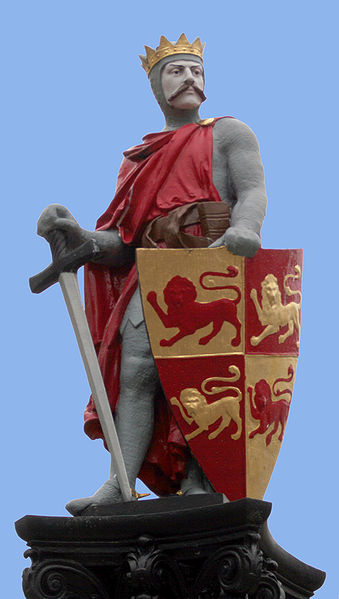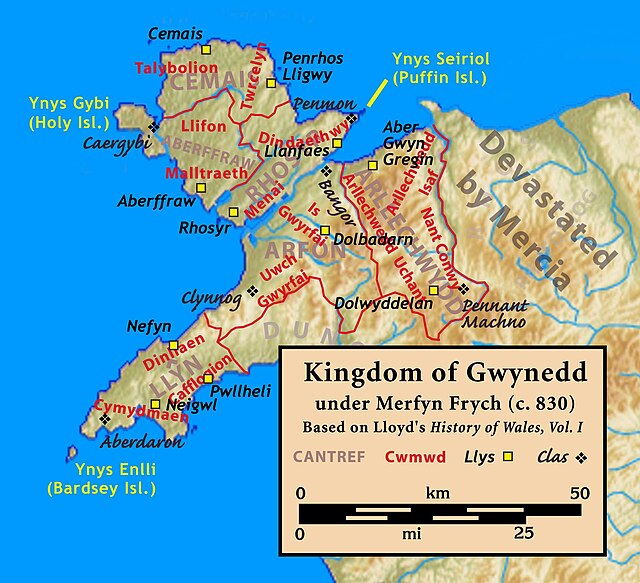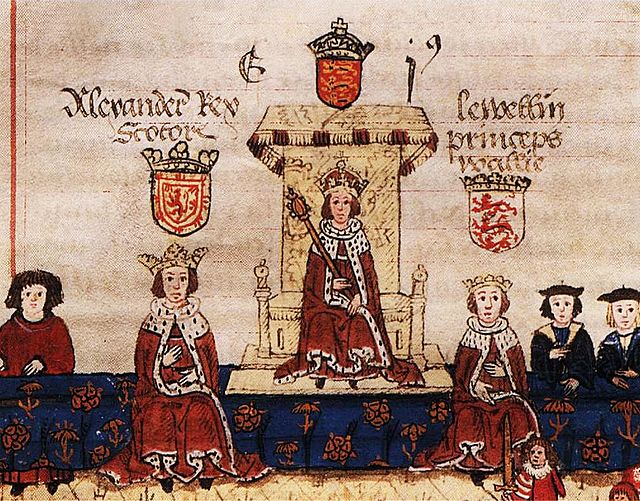The Principality of Wales was originally the territory of the native Welsh princes of the House of Aberffraw from 1216 to 1283, encompassing two-thirds of modern Wales during its height of 1267–1277. Following the conquest of Wales by Edward I of England of 1277 to 1283, those parts of Wales retained under the direct control of the English crown, principally in the north and west of the country, were re-constituted as a new Principality of Wales and ruled either by the monarch or the monarch's heir though not formally incorporated into the Kingdom of England. This was ultimately accomplished with the Laws in Wales Acts 1535–1542 when the Principality ceased to exist as a separate entity.
Llywelyn ap Iorwerth (Llywelyn Fawr) ruled Gwynedd and most of Wales from 1195 to 1240
Monument to Llywelyn the Last, Cilmeri.
Drawing of a Welsh judge from the Peniarth 28 manuscript.
Edward I creating his son Edward of Caernarfon Prince of Wales in 1301 (early 14th-century manuscript)
The House of Aberffraw was a medieval royal court based in the village it was named after, Aberffraw, Anglesey within the borders of the then Kingdom of Gwynedd. The dynasty was founded in the 9th century by a King in Wales whose descendants founded the Welsh Royal Houses. The other medieval Welsh dynasties were the Royal Houses of Dinefwr, Mathrafal.
7th century Catamanus Stone
Kingdom of Gwynedd (showing Aberffraw on the Isle of Angelsey) c. 9th century.
Prince Llywelyn II (right) with the Scottish and English monarchs.







